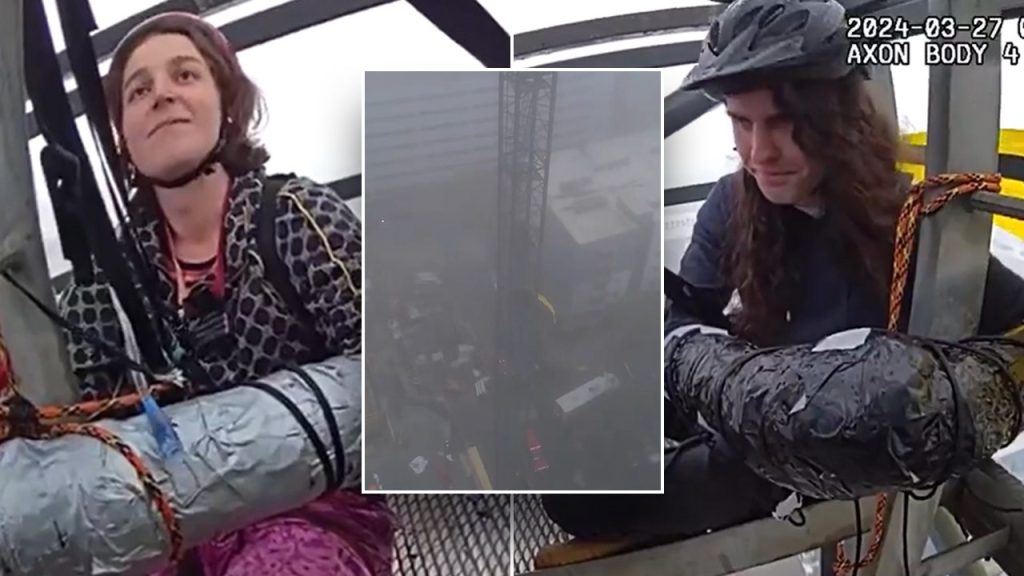Atlanta police and rescue crews removed two activists who scaled a tower crane at the construction site of a police and firefighter training facility known as “Cop City,” which has sparked criticism over fears of police militarization in a poor, predominantly Black neighborhood. The individuals, referred to as “anarchists” by Atlanta police, were found high up on the tower crane with their hands duct-taped to the metal bars. In police body camera footage, officers could be heard trying to communicate with the activists while people on the ground chanted in support. The officers emphasized the danger of the activists’ actions and urged them to come down safely, eventually using a tarp and a saw to free the activists from the structure.
The protest against the construction of “Cop City” is part of a larger movement that has been ongoing for more than two years, with some characterizing it as a conspiracy leading to underlying crimes such as possessing fire accelerants and throwing Molotov cocktails at police officers. Opponents of the facility argue that it could contribute to police militarization and worsen environmental damage in the South River Forest, a disadvantaged, majority-Black area. On the other hand, Atlanta officials and supporters believe the $90 million, 85-acre facility will improve training facilities for first responders, aid in recruitment and retention of police officers, and benefit the community as a whole. The clash between protesters and authorities reflects a deeper divide over the perceived impact of the training center on the surrounding area.
The incident at the construction site of “Cop City” underscores the ongoing tensions surrounding the project and the larger issue of police militarization. With protesters voicing concerns about the facility’s potential negative effects on the community, authorities face the challenge of balancing public safety and law enforcement needs with the desires of residents who fear further militarization of policing in their neighborhood. The confrontation between activists and rescue crews highlights the complexities of addressing these competing interests while ensuring the safety and well-being of all involved.
The involvement of Atlanta police and emergency responders in removing the activists from the tower crane reflects the escalating nature of the protest against “Cop City” and the broader pushback against police militarization in disadvantaged communities. The use of force to intervene in the protest underscores the challenges faced by authorities in balancing the rights of activists to demonstrate with concerns about public safety and potential criminal activity. As the debate over the construction of the training facility continues, it raises questions about the role of law enforcement in communities of color and the need for greater dialogue and understanding between residents and authorities to address underlying issues of systemic racism and social injustice.
The interaction between the activists and the police officers during the protest at the construction site of “Cop City” exemplifies the complex dynamics at play in discussions around police militarization and community activism. By attempting to engage with the protesters and ensure their safety while also upholding the law, the officers involved highlighted the need for constructive dialogue and mutual respect in addressing contentious issues. As the debate over the training facility continues, it underscores the importance of finding common ground and working together to promote positive change and address the concerns of all stakeholders involved in the process.
As the conflict over the construction of the police and firefighter training facility in Atlanta’s South River Forest intensifies, it reflects broader societal issues relating to race, policing, and community engagement. The clash between activists and authorities over “Cop City” underscores the deep-rooted divisions and challenges facing disadvantaged communities in their interactions with law enforcement. By acknowledging these complexities and working towards meaningful dialogue and solutions, all parties involved can strive to create a more just and equitable society where the needs and concerns of marginalized communities are addressed and respected.


